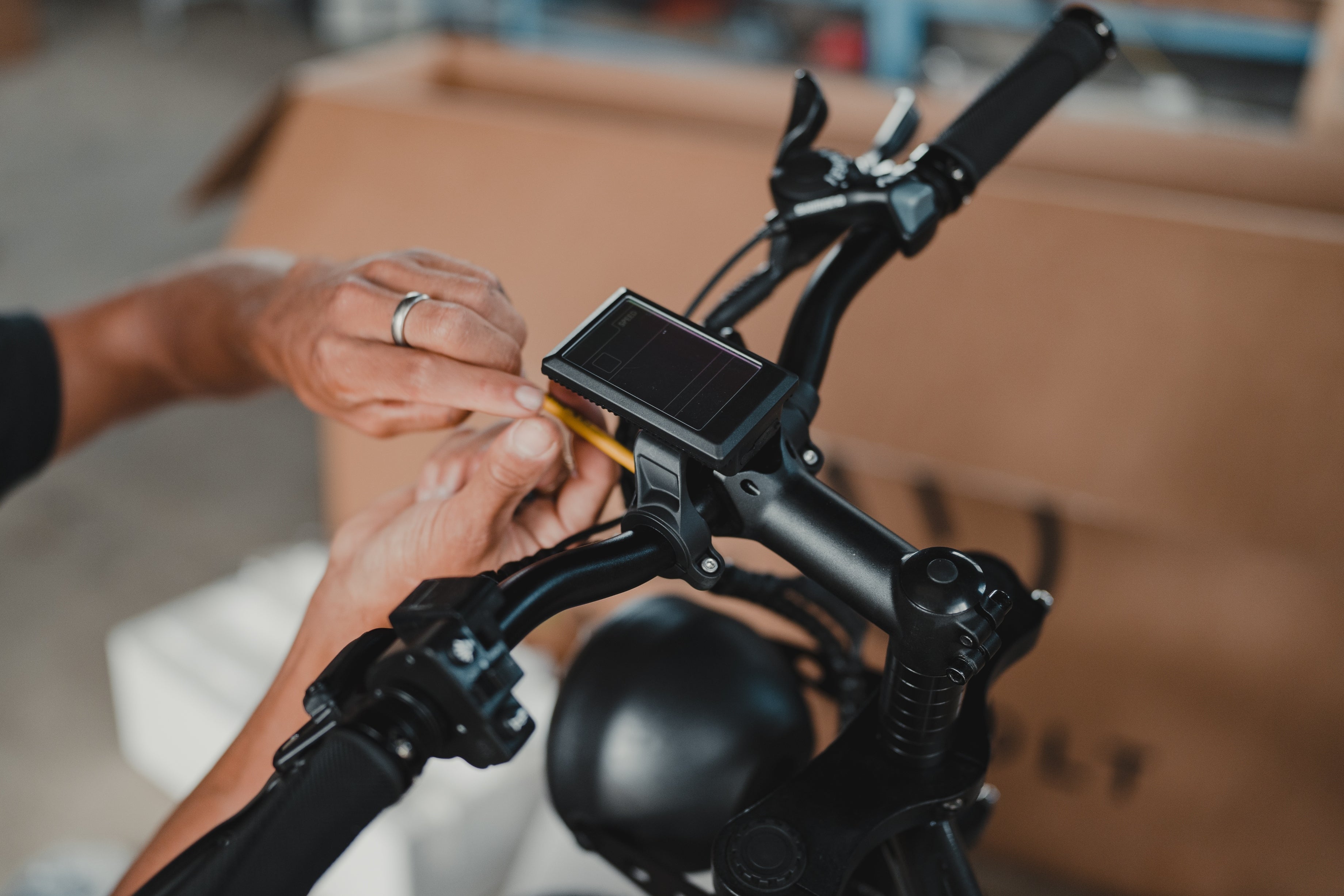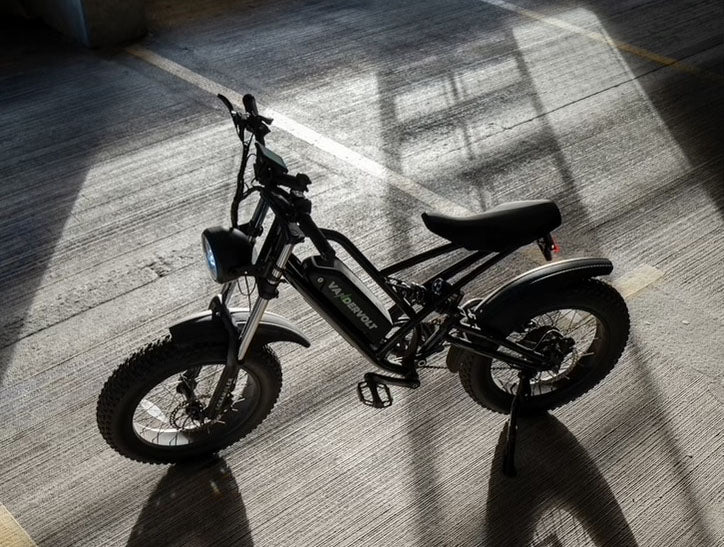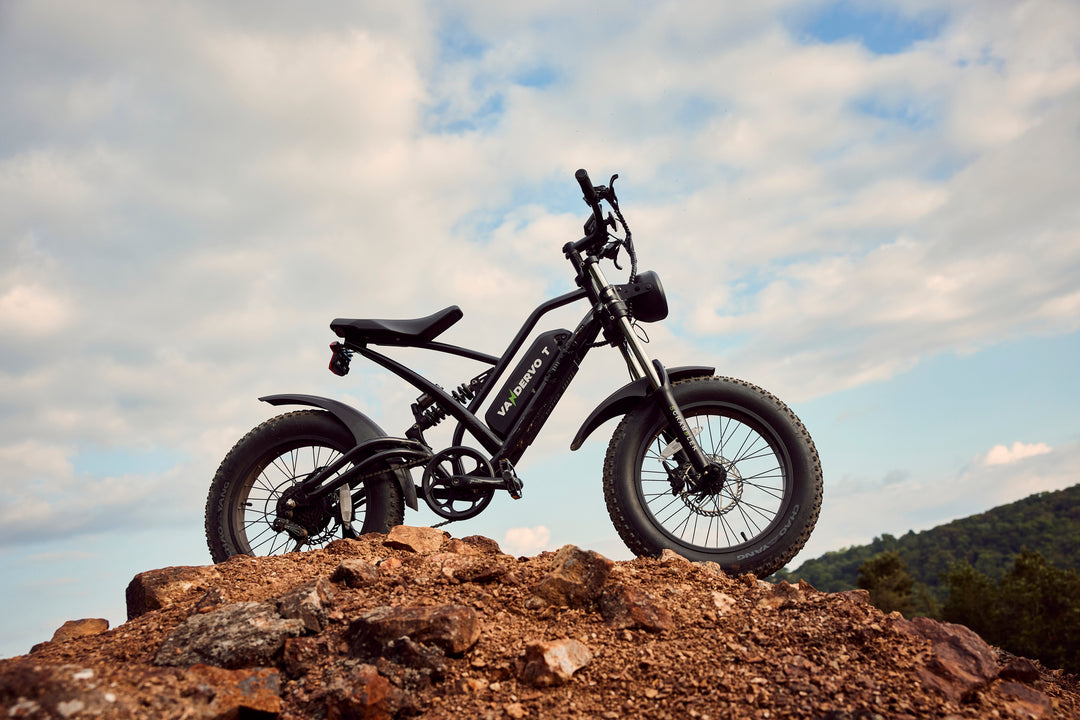As electric bikes gain popularity as a more sustainable and convenient mode of transportation, understanding how to charge the battery properly becomes essential for maximising its lifespan and performance. Electric bikes offer a myriad of benefits, including reduced emissions, improved health, and cost-effective travel. However, as an e-bike owner, it's essential to understand the ins and outs of charging your electric bike to ensure a smooth and hassle-free experience. Most e-bikes have a lithium-ion battery, such as VanderVolt bikes, which recommends a charge after every ride. Not every bike needs to be charged after every ride, even with a lithium-ion battery. If the battery on your bike falls below 40%, then it’s imperative to charge it to around 80%-85%. Charging your e-bike is all dependent on how often you use it, the distance in which you wish to travel and the type of battery you have.
What are the different types of batteries for an e-bike?
There are a range of batteries available for e-bikes and each one will determine the performance and overall riding experience. The most commonly used batteries are lithium-ion, lithium iron phosphate, nickel metal hydride, lead-acid and solid-state. VanderVolt bikes use lithium-ion batteries, so understanding what this means is important for operating your bike. Each battery type has its advantages and disadvantages, so it’s important to always do your research and make sure that the type of bike you have is compatible with the battery you purchase.
Lithium-ion batteries offer the rider high energy density, meaning they can store lots of energy in a small and lightweight package, making them more convenient for storage purposes. These types of batteries also provide good power output, longer life cycles and a low self-discharge rate as well as their faster charging capabilities. Luckily, VanderVolt’s Scramblers come fully equipped with a removable lithium-ion battery so you are receiving all the benefits of this battery.
Lithium iron phosphate batteries provide enhanced safety, stability and longevity. They are less prone to overheating or catching fire and tend to have a longer lifespan than other batteries. A higher number of charge cycles in comparison to other lithium-ion batteries are another reason that this battery type is so popular among e-bike riders.
Nickel metal hydride batteries are known among users for their durability and reliability. They can retain a decent energy density and can offer a longer lifespan compared to other batteries. Even though they are less commonly used, they can still be found in older models of e-bikes.
Lead-acid batteries are one of the oldest and most affordable options available for electric bikes. These bikes have a low energy density and are heavy which can alter and affect the bike’s performance and the rider’s overall experience.
Lastly, solid-state batteries are a newer type of battery that looks at revolutionising electric bike batteries. They are highly technical and involve lots of electrolytes that allow for higher energy density, improved safety and faster charging times. These batteries are still under development but could prove useful to e-bike riders and owners.
Should I charge my e-bike after every use?
The most common battery types for e-bikes are lithium-ion and lithium polymer. Before knowing how often to charge your battery and e-bike, it is important to understand and recognise which battery you have. These types of batteries are lightweight, long-lasting and offer high energy density.
Most lithium-ion battery e-bikes recommend that you recharge your bike after every use. This, however, is just a recommendation. Most batteries are not built to be drained and then charged fully regularly. This can harm the battery and shorten its life as well as leading to needing a replacement more often. VanderVolt bikes have a charging time of 7-8 hours and it is recommended to not let the bike overcharge.
It is suggested to charge your e-bike only when it is necessary. This way, your battery will have a prolonged life span and you do not have to spend money on new batteries constantly. No matter the battery, breakdowns are more common when a battery is over or undercharged constantly.
When should I charge my e-bike?
There are a few instances where charging your battery is imperative. Some of these instances are if you know you are going to be riding it either the same day or the next day, if it gets below 40% of its battery capacity and if it has been sitting idle for a few weeks but under one month.
Charging your electric bike battery should be done regularly. Keeping the battery energetic will help to prolong and maintain its life.
When it comes to leaving your e-bike on charge all night, it’s important to note that this is not recommended or encouraged. Charging a battery over 100% often takes much longer and overworks the battery.
How do I charge my e-bike battery?
Of course, it is important to only use the charger that came with your bike to charge it. Ensure that you are charging your battery in an area that is between 60º and 70ºF. It is recommended to avoid charging your battery in areas with temperatures that border on freezing or too hot, such as above 32º and below 100ºF. Another important step in charging your battery is ensuring that the battery is fully off.
Keeping your battery plugged into a charge that is in a secure location is one of the most important aspects of charging your battery. If you have a trip planned and leave your battery to charge overnight, ensure that the battery is fully connected to a power source so that it does not lose charge or disconnect.
After you have connected your battery charger, you should see an indicator light pop up. Make sure you don’t leave the room before you see this, as this informs you that your bike is charging properly. Charging the battery to between 80%-90% is an optimal amount for your bike to be at if you aren’t planning a long-distance ride or until the light on the battery charger goes green.
What are the methods of charging my e-bike?
When it comes to charging your electric bike, there are a few different methods to choose from. Some of the most common methods are:
How long will my battery take to charge?
The charging time for your bike may depend on varying factors such as the battery capacity, method of charging and charging specifications. On average, it takes around 3-6 hours to fully charge an electric bike with a standard charger. If you are using a fast charger, your bike could reach a full charge in under 2 hours.
Some tips on optimising your charging times are to plan your charging schedule, avoid deep discharges that can shorten your battery’s life span and keep your battery stored in a cooler temperature and dry area.
How do I maintain my battery?
To keep your battery in the best possible condition and to ensure it has a long lifespan, it is important to keep a few ideas in mind. You should regularly clean your battery and ensure that the connections and the battery itself are free from debris. Overcharging your battery can reduce its overall capacity over time, so ensure that once your battery reaches a full charge, it is unplugged.
It may also be worthwhile to invest in a spare battery. If you are a frequent rider of your bike or go on long-distance rides, having an extra battery in case of emergencies may come in handy.
Owning an electric bike brings numerous advantages. Understanding the best practices and ways for charging your e-bike and its battery is key to enjoying your bike for as long as possible. Be sure to do your research on the different types of batteries available and what would be most compatible with your bike.
Of course, if your bike already comes with a battery and charger, and luckily VanderVolt bikes come with a removable lithium battery, it is essential to stick with those provided as those will be the most effective charging tools. Knowing when to charge your battery, how long to charge it for and the proper methods, can all help to enhance your experience of being an e-bike rider and owner. VanderVolt’s unique e-bike, the Scrambler, has a charging time of between 7-8 hours. This information is useful to know about your bike so you don’t over or undercharge it to ensure it is ready for all your adventures. By utilising the right charging methods, optimising charging times, maintaining your battery and implementing the right tools in place, you can make the most out of your e-bike, its battery life and extend its longevity and ensure it’s always ready for your next ride.





